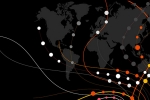Luxembourg's financial services centre is unique. With its exceptional range of services, world-class financial infrastructure and expertise, the country’s banking industry is competitive. With its unparalleled range of services, financial infrastructure and expertise, Luxembourg is a financial global hub. Despite a major transformation wave hitting global financial markets combined with an increasingly complex regulatory context, the local financial sector is still resilient, competitive and growing.
Luxembourg economic model remains one of the most competitive in the world. The World Competitiveness Yearbook 2022 ranked Luxembourg 13th out of 63 ccountries in terms of competitiveness which largely contributes to the attraction of the Grand Duchy on the international place and help the country attract, grow and retain talents and investors. Luxembourg is continuing to attract major multinational groups, and encouraging them in developing their activities in the country.












